Implementing eID’s on-farm and improving reproductive success
Since the announcement of mandatory eID’s in Australia, sheep producers have been looking for hassle free options to implement an electronic system on-farm. Forty Upper North Farming Systems (UNFS) producers came together at Caleb Girdham’s family property near Melrose, SA to learn more about implementing eID’s on-farm and improving reproductive success.
This is the second workshop for the MLA Producer Demonstration Site (PDS) Lotsa Lambs.
At the workshop producers could see Caleb’s containment feeding pen set up, newly built shearing shed and yards as well as a demonstration of the BreedElite autodrafter. A wealth of knowledge and experience was shared throughout the morning amongst participants and guest presenters included Deb Scammell (Talking Livestock), Nathan Scott (Achieve Ag) and Mary Rowe (Zoetis).
Caleb usually contains pregnant ewes for a couple of months and then releases into paddocks just before lambing. The best lambing results are consistently achieved in scrub paddocks with mob sizes around 100.
“I’m happy with the lambing results, especially through the drought and I contain ewes worth the effort to maintain ewe condition and preserve ground cover on paddocks during a time of feed deficit in the autumn months,” Caleb said.
Containment feeding tips
Deb Scammell talked through Caleb’s containment set up.
“You can save money on set-up, but it might cost you in labour later so that’s something to consider when planning your containment feeding infrastructure,” Deb said.
Good rainfall in late spring/summer in the Upper North has seen feed abundances in paddocks, but Deb still sees containment feeding in 2023 as a good fit in mixed farming systems in the region to ensure dry feed and ground cover is retained and to allow pasture to get away prior to lambing.
“Poor quality hay (low energy and high fibre) due to the lush spring and rain damage at hay making will be an issue this year and needs to be taken into account when feed budgeting,” Deb said.
“Ewes are likely to need higher quantities of energy dense feed to make up for the energy shortfall.
Mycotoxin tests are also worth considering this year to determine if you are likely to have production or reproductive issues.”
Advantages to containing pregnant ewes include:
- Improved ground cover and food on offer in lambing paddocks.
- More effective management of ewes – keeping a closer eye on condition.
- Confidence to hold onto stock during dry periods.
- Can achieve higher stocking rates.
- Improved marking percentages – or maintain percentages rather than experiencing a dip in the dry times.
Autodrafter considerations
Sheep were drafted using a BreedElite autodrafter as a demonstration for the group.
“I purchased this handler because the system had a lot of potential,” Caleb said.
“I had some teething issues, but I recently invested the time to work through setting up the system and inputting data and I can now see the potential gains for my business in labour efficiency and improved data-based decision making in the future.”
Nathan Scott advised that these processes can be complex, and they may not save you time at the start, they will take you more time in the learning and set-up phase, but the benefits will start to be apparent down the track.
“As mixed producers we do not use these operations regularly with cropping being the main priority at certain times of the year so there are two things to consider when choosing a system:
- Do you like the way it operates?
- What back up support is provided?
“Look for good reps and back up support because you will be using them,” Nathan said.
Nathan reiterated the importance of lead up race design for smooth operation of sheep handlers.
“The race needs to be as narrow as possible directly behind the drafter and an adjustable option is ideal to change race width when drafting lambs compared with ewes,” Nathan said.
Nathan urged livestock producers to think about eID’s as ‘precision ag for livestock’.
“You can’t improve what you can’t measure and understanding the information is crucial,” Nathan said.
“For instance, recording birth status against ewe hoggets can be very useful because visually we could be classing out our twins as lesser looking animals and potentially reducing fertility of our flock as a result.
“The data collected and stored for each animal may not be utilised straight away, but down the track when dry conditions hit and feed is tight, we can refer to this data to make informed decisions on which ewes to keep and which to cull.
“For example holding onto ewes that have been pregnancy scanned with twins 2–3 years running to improve fertility.”
Nathan talked through how crucial eID’s are in managing biosecurity, especially in the case of a foot and mouth disease outbreak in Australia.
“It’s not just another cost but an investment in our industry,” Nathan said.
Improving reproductive success
The MLA Producer Demonstration Site (PDS) Lotsa Lambs not only focuses on containment feeding of pregnant ewes but also lambing multiples in smaller mobs to improve reproduction success in Upper North flocks.
Nathan is a firm believer that mob size is an underestimated factor in lamb survival from his experience as a producer as well as working with many sheep producers.
“For singles, mob size doesn’t matter too much but for multiples it is best to aim for as small a mob size as you can practically achieve, ideally less than 100,” Nathan said.
“The time between the birth of the first and second lamb and the second and third lamb is crucial and mob size significantly improves the chance of survival of these multiples.”
Managing worms
Mary Rowe talked about the importance of managing worms in sheep flocks this season with large worm burdens developing locally due to substantial summer rainfall including the potentially harmful Barber pole worm.
Mary emphasised that effective drenching will control a worm burden and also minimise the incidence and impact of drench resistance.
Six things to consider when using drenches:
- Only use drenches that work
- Only drench when needed
- Use paddock management to decrease worm risk
- Use combinations
- Use short-acting drenches preferentially
- Rotate drenches.
Many workshop attendees took advantage of free feed tests offered on the day for hay, pasture and grain samples. These samples were coordinated by Deb Scammell from Talking Livestock and funded by the Northern and Yorke Landscape Board.
This workshop was funded by Meat & Livestock Australia, The Northern and Yorke Landscape Board and Red Meat & Wool Growth Program.
Workshop image gallery
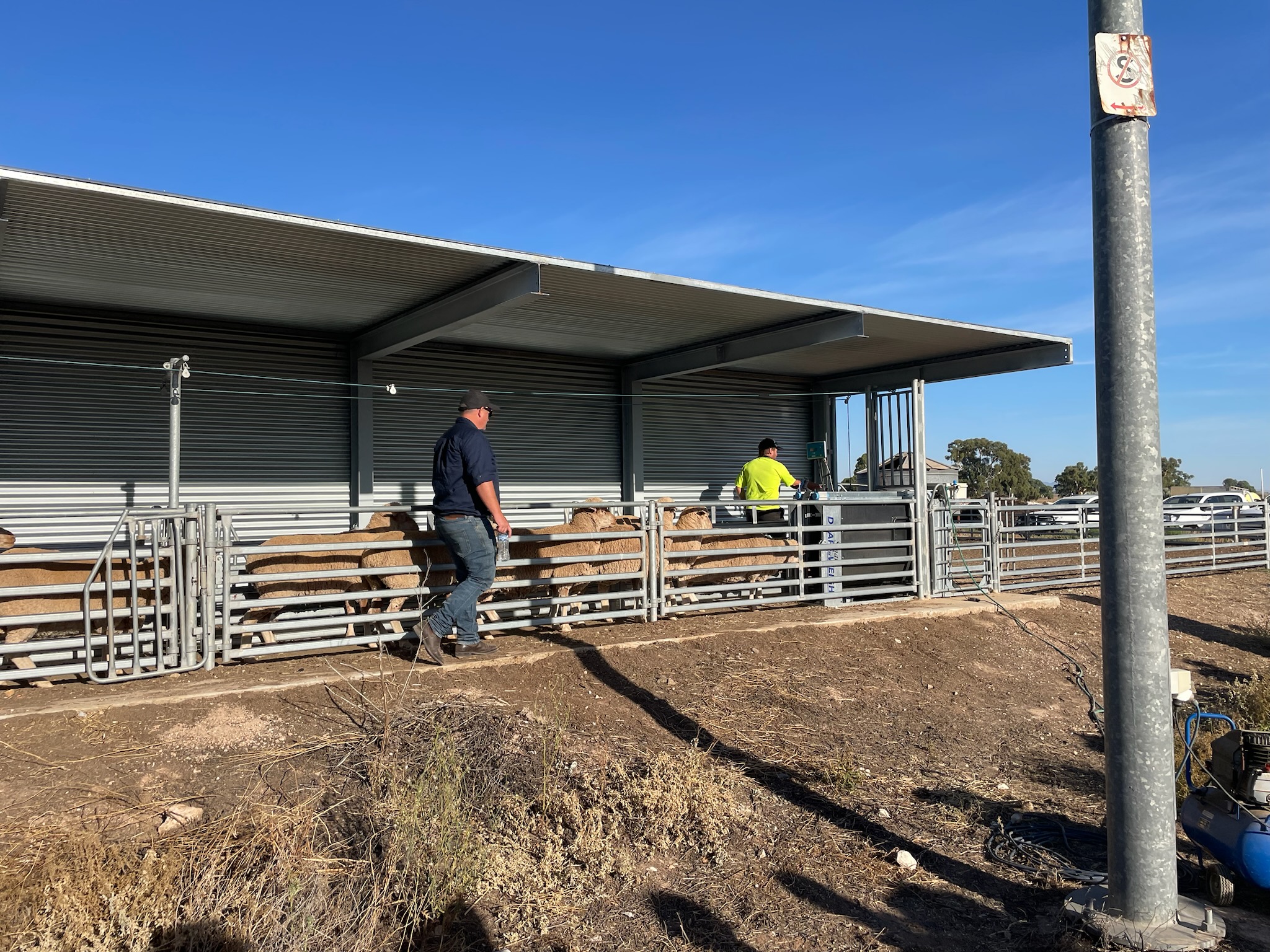
Nathan Scott and Caleb Girdham completing the autodrafter and yard demonstration
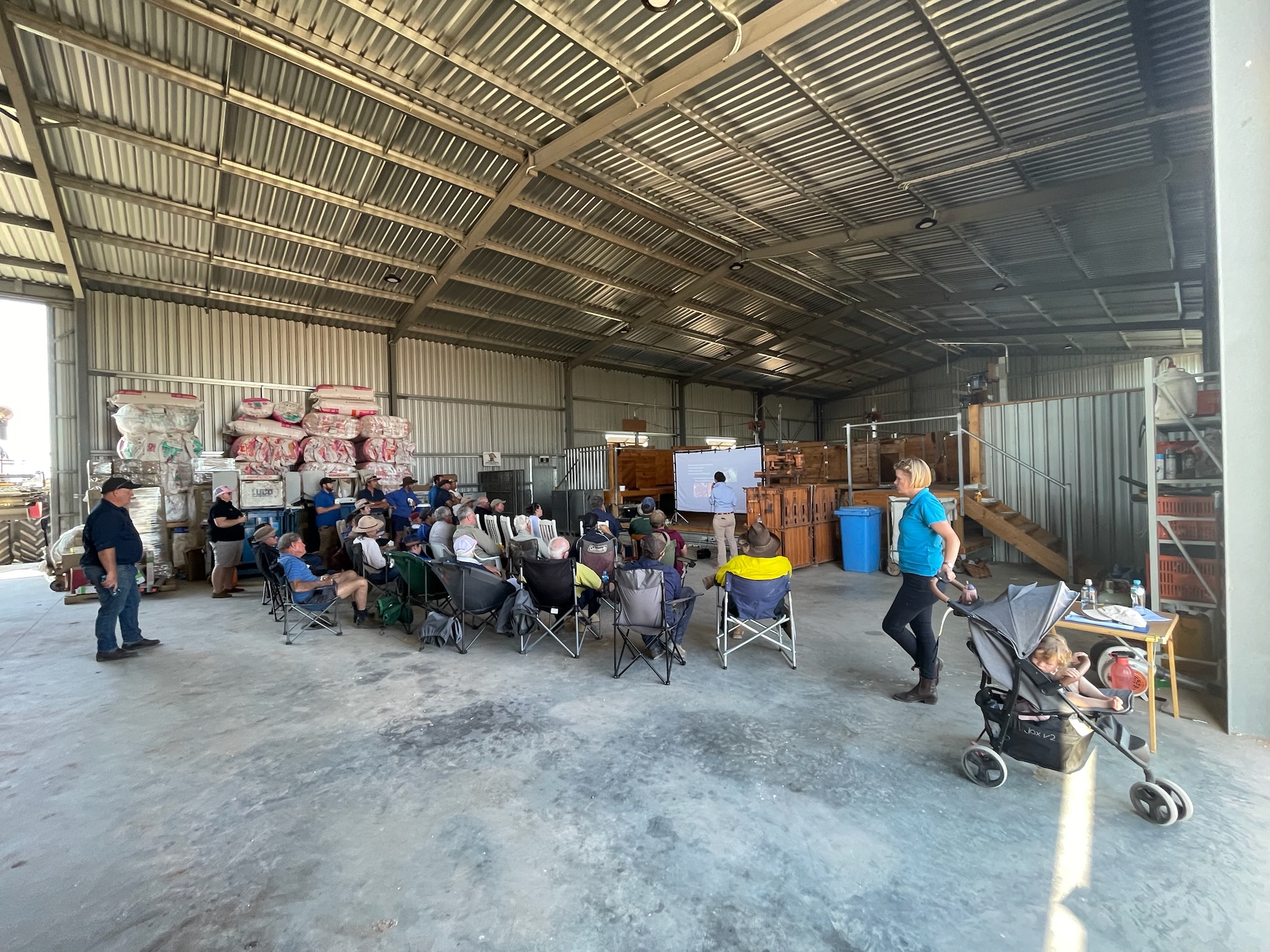
Workshop presentations in Caleb Girdham’s shearing shed
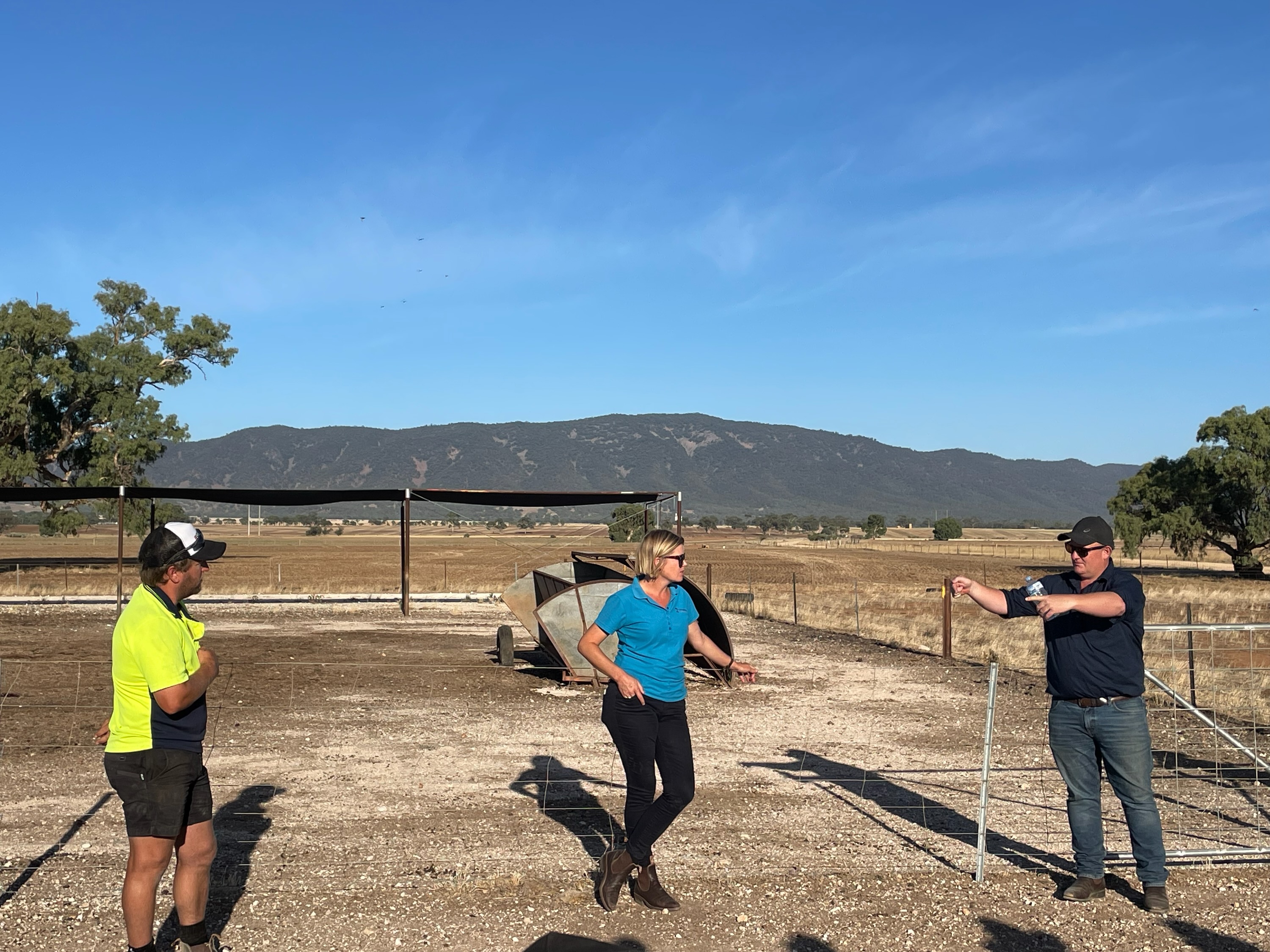
Caleb Girdham, Deb Scammell and Nathan Scott discussing containment feeding infrastructure
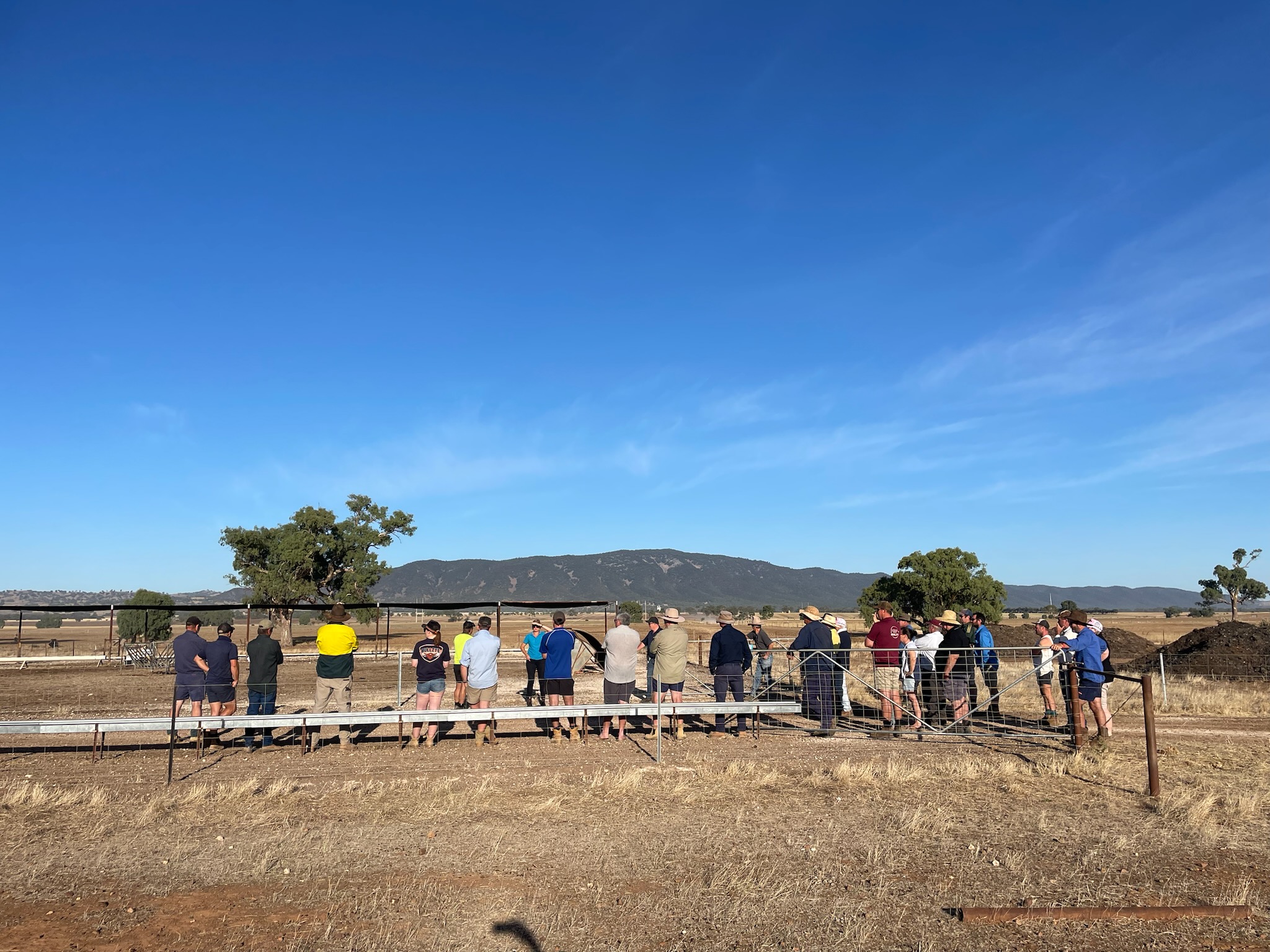
Containment feeding visit at Caleb Girdham’s property, Melrose, SA with UNFS producers
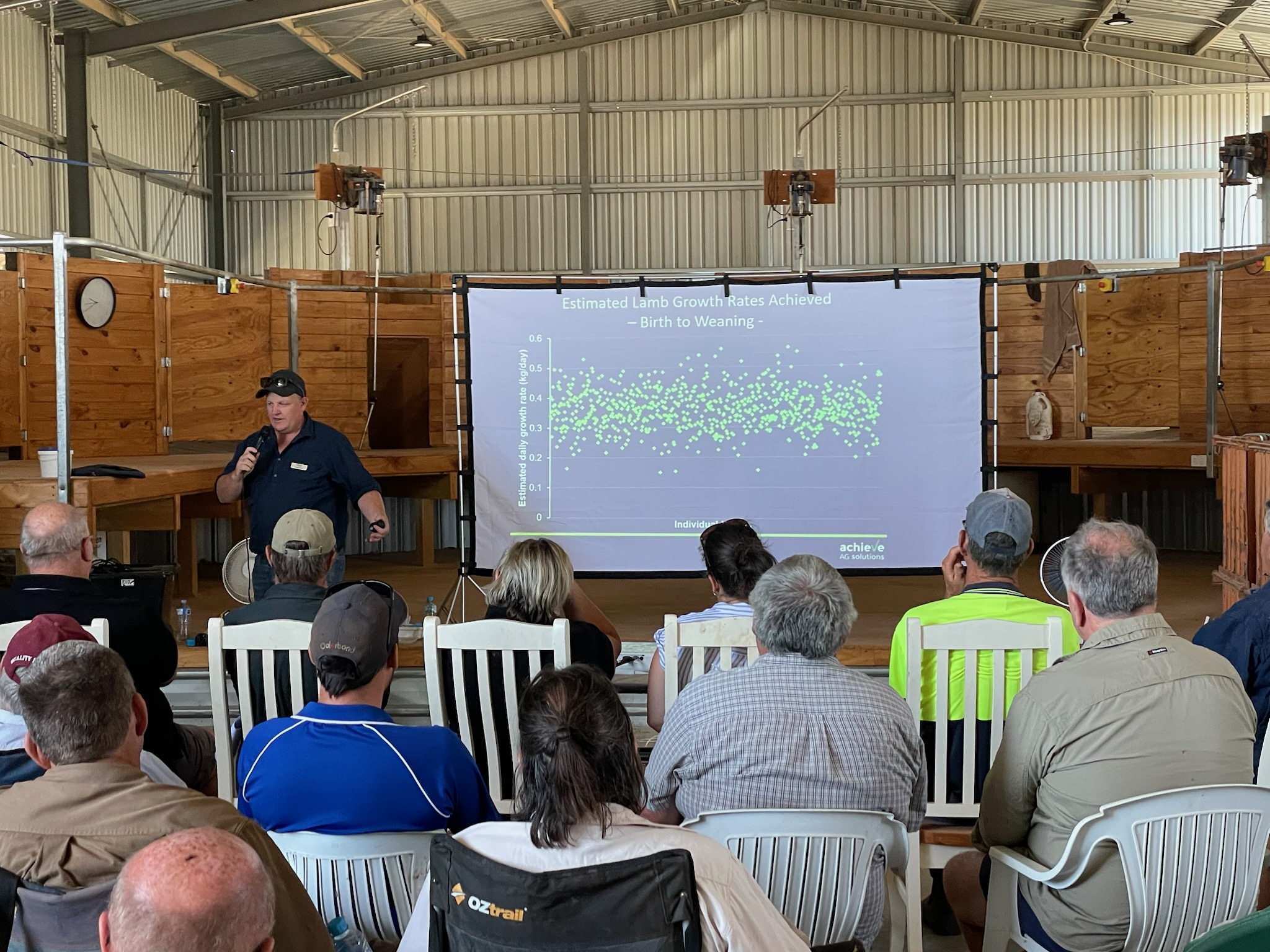
Nathan Scott from Achieve Ag presenting



